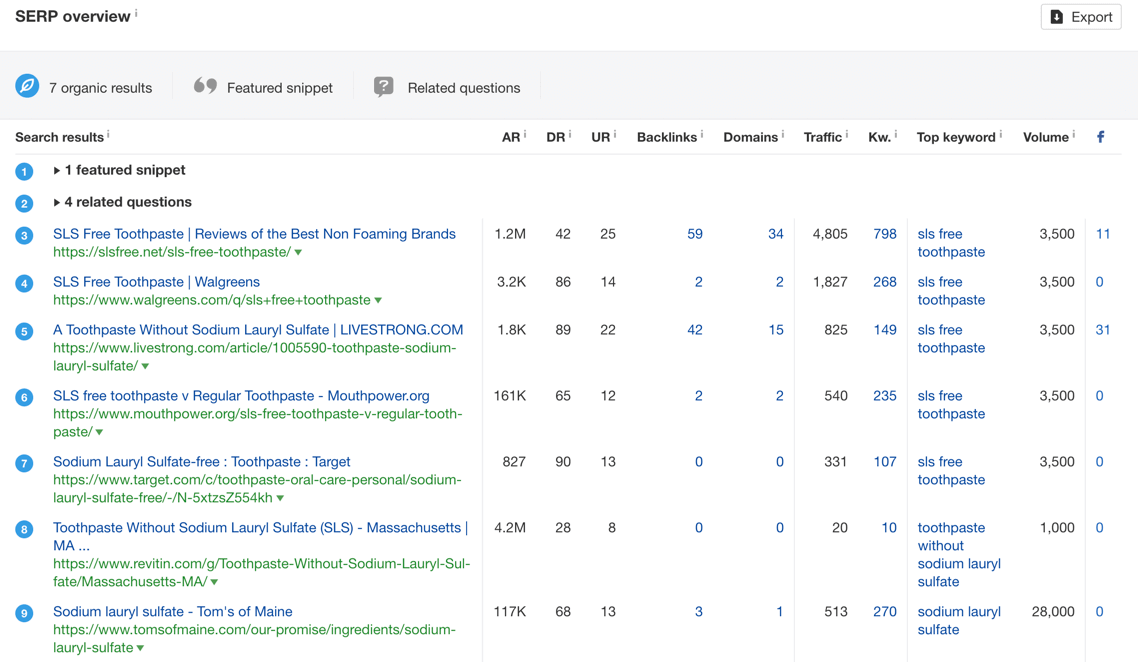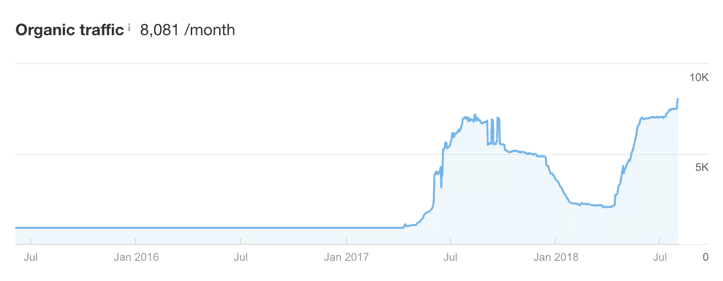How do you create content that people actively look out for, and make sure that they’re able to find it?
Blog posts are great for your business. They drive traffic to your website, raise awareness for your brand and continue to generate inbound leads once they start ranking in Google – in theory, that is.
In practice, it’s just as likely that your brand new blog post sees fantastic traffic numbers right off the bat…which die off quickly after the first week or so. In the world of SEO, or Search Engine Optimisation, we call this phenomenon the Spike of Hope – which degenerates into the Flatline of Nope.
This is what it looks like.

What’s happening here is: your traffic spikes after you publish and promote your blog post (on social media, through your email newsletter, what have you.) After this immediate network checks your blog post out and gives it a nice boost in views, it then vanishes into the recesses of the world wide web, never to be seen again.
So how do you write a blog post that people are actually interested to read? And perhaps the more pressing question – how do you create content that people actively look out for, and make sure that they’re able to find it?
Enter SEO.
Let’s start with step one.
1. Begin with keyword research
The trick to figuring out what people want to read is pretty simple – find out what they’re searching for. When a person is Googling a topic, you can be sure that they’re invested in reading more about it.
So: always aim to write content around a topic that you already know has organic search traffic potential. If you’re able to nail this research step and incorporate it into your content strategy, you’re guaranteed some eyeballs on your blog posts when they begin to rank.
One easy way to generate keyword ideas is to use Ahrefs’ Keywords Explorer.
Let’s assume that my niche is dental care. Pulling up a Phrase Match report for “toothpaste” in Ahrefs and setting the word count filter to “5 words or more” gets me a list of less generic terms that can spark off some good ideas.

Remember to take into account factors such as:
- Search Volume – at a glance, this metric tells you how popular a term is;
- Clicks – if a term has fantastic search volume but poor clickthrough rate, it defeats the purpose of writing content around it;
- Keyword Difficulty – if a particular term is extremely competitive and difficult to rank in the top 10 results for, it might not be a smart move to target it.
All of these metrics and data are neatly compiled for you in Ahrefs reports. Of course, there are also other tools that you can use to perform keyword research. Some free and popular alternatives include: Google Trends and Answer The Public.
There are also a ton of other ways to do effective research, like using related searches on Google or doing competitor analysis to find out which keywords are bringing your competition the most traffic.
Try them all and see which method you like the most. Then, it’s time to get writing!
2. Focus on the reader
You’ve figured out what people are searching for; now it’s time to write your blog post.
These days, Google is smart enough to figure out what you’re writing about and even rank your blog post for relevant terms. All you need to do on your end is to find out what your content needs to address – then address it well.
Again, the quickest “hack” for this is to simply examine the top results for the keyword term you’ve chosen.
Let’s look at the example above again. From the brief list in the screenshot, the term “toothpaste without sodium lauryl sulfate” sticks out as a promising topic to create content around.

Looking at the top ranking results, search intention is pretty clear. People are either
- Looking to buy SLS free toothpaste, or
- Trying to find out what SLS free toothpaste is, and how it’s different from normal toothpaste.
Your content options going forward are now laid bare.
To really set your post apart from the competition, try to find a unique angle to your blog post. In this case – looking at how unexciting the current SERP is, why not go for an angle like “7 Reasons Why You Should Switch To SLS Free Toothpaste”?
Or, reach out to some experts and collate their opinions into a piece like “SLS Toothpaste: 3 Dentists Reveal All There Is To Know”.
There are tons of content options out there – brainstorm a little and get creative with your angle.
3. Make it easy for Google
As smart as search engines are these days, it’s always in your favour to make sure your content is as search-engine friendly as possible.
Here’s a quick checklist of best practices:
- Title tag – include your keyword and include it as early as possible to ensure relevancy of content;
- Url – one of the first things that is crawled, so make sure your keyword is here too;
- Image optimization – use descriptive names for your images’ alt tags so crawlers can “see” them;
- Meta description – this is often what determines whether you get the click on a SERP. Make sure this is as engaging as possible, and include your keyword so your topic is clear;
- Mobile optimization – Google is now mobile-first, so it’s extremely important that your website has a mobile version or is at least mobile-friendly.
Note: if your blog is on WordPress, install a plugin like Yoast SEO that will guide you through all the above and make life a lot easier for you in general.
4. Keep your post up-to-date
You’ve done so much work to create a killer blog post that ranks well in Google and that people are eager to read. Now it’s time to make sure that things continue that way.
How? By making sure your content stays relevant.
People don’t often want to read outdated articles, and statistics support this. Have a look at Smartinsights’ own study: How businesses use social media: 2017 report, for example.

Ahrefs’ Site Explorer shows that organic traffic to the post was consistently on the rise after it was published (good content has that effect!) However, since 2018, traffic seems to be on the decline.
In all likelihood, since the post is centered around statistics from 2017, readers and search engines are finding the content out of date.
The fix for this is fortunately simple: refresh your content.
Ahrefs actually experienced the same thing with our top Google searches post. When the featured data became out of date around April 2018, we noticed organic traffic to the post dropping and quickly refreshed the post with an update.
Since then, our organic traffic has shot back up. We now keep the statistics in that post fresh, and so far so good! Rankings seem to be holding steady.

Final thoughts
Follow the steps above and you’ll be well on your way to writing, and ranking, a great blog post that people genuinely want to read – and will continue wanting to read. Remember: focus on finding out what your readers are interested in, and the rest will follow. Happy writing!